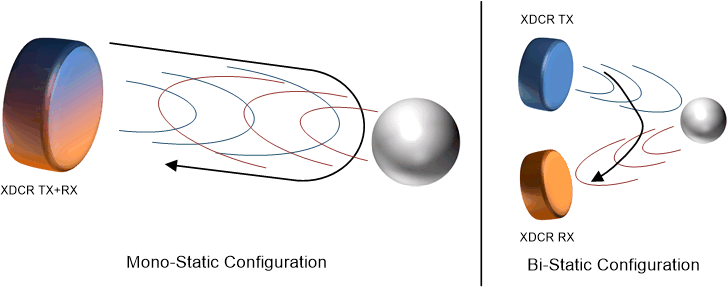SLAA732A February 2017 – April 2021 PGA460 , PGA460-Q1
4.1 Sonar Configuration
Air-coupled ultrasonic transducers can be used in a wide variety of applications, from automotive park assist and autonomous robotics, to paper counting and room occupancy detection. The most basic approach to ultrasonic measurements is to use a mono-static configuration for linear time-of-flight ranging. This measurement requires a single transducer to serve as both the transmitter and receiver. The mono-static configuration has limitations to the minimum detectable distance because the ringing-decay time, and limitations to the maximum detectable distance because of the loading-resonant effects of the transformer or driver circuit.
For improvements to both the minimum and maximum range requirement, a bi-static configuration is required to separate the transmit and receive functions to two independent transducers. The bi-static option allows for near 0-cm detection, especially when the receiving transducer is recessed in comparison to the transmitting transducer. For angular orientation, tracking, and triangulation, three or more ultrasonic transducers are required, whereby each transducer is paired with an independent PGA460 device. A single PGA460 device can support the mono-static or bi-static configuration for standalone purposes. Figure 4-1 shows an example of the mono-static and bi-static configurations.
 Figure 4-1 Sonar Configurations
Figure 4-1 Sonar Configurations